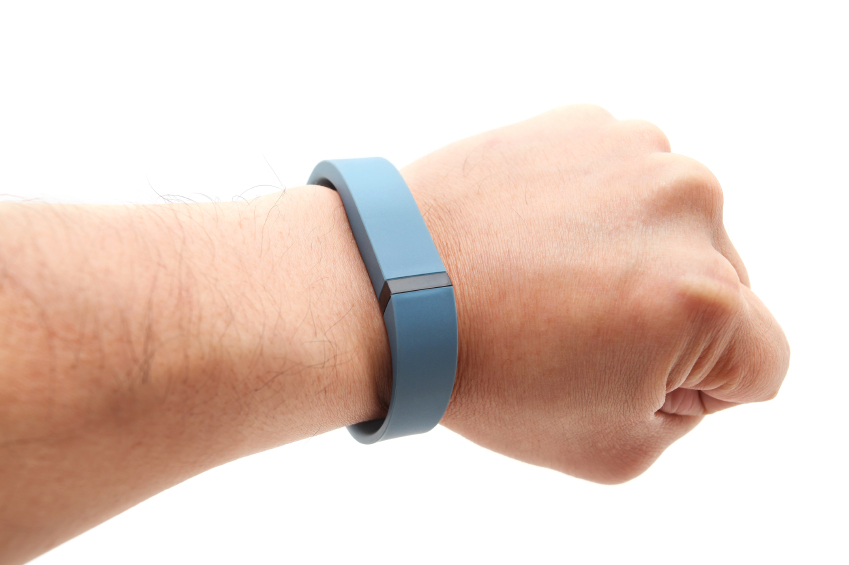by Danna Korn
Many companies are turning to wellness programs to boost employee engagement, and wearable technology is helping the initiative. For more information on wearables, we present an article by Danna Korn, cofounder and CEO (Chief Energizing Officer) of Sonic Boom Wellness, a software company specializing in fun, innovative corporate wellness programs that improve employees’ daily health habits.
 |
Activity-tracking devices are one of the most effective tools for getting employees to participate in worksite wellness programs. Getting them to continue participating, however, is an entirely different ball game. Follow these tips to get (and keep!) employees more deeply engaged in well-being initiatives.
It’s TIME for a Little Competition
Which activity metric is generally used for employee wellness contests? Steps? Calories? Distance? When a contest is conducted based on steps taken, it automatically excludes those who do nonimpact activities and gives an unfair advantage to shorter people (who presumably take more steps)—resulting in the same three winners every time.
By conducting contests based on activity TIME, the goal is to get everyone more active—not just to praise the most athletic people in the company. Using activity time levels the playing field for those who haven’t seen the inside of a gym in 30 years. If one competitor walks slowly for 40 minutes, they’ll earn the same credit (but not as many steps) as the sprinter who runs for 40 minutes.
Creating a competition based on time also allows cycling, swimming, and other nonimpact activities to count toward the stats—pulling even more people into the game. Most activity trackers try to estimate steps for nonimpact activity, but they don’t do a very good job.
The length of the contest makes a difference, too. Instead of having a couple of 8- or 10-week contests, limit each one to 4 weeks or shorter. No matter how fun the contest theme may be, people are bound to get bored and stop participating after a few weeks. What’s more, if the contest front-runners pull away from the pack, even more people will disengage due to the “impossibility” of catching up and winning.
Deploying multiple quick campaigns throughout the year allows for more creative themes and keeps the competition fresh and exciting, which also keeps employees engaged and competitive as each round of results is tabulated.
Data Accuracy Is Crucial
Some people don’t really care whether their activity tracker is dead-on accurate … until they’re in a contest. Whether there are prizes or just bragging rights on the line, competition tends to make everyone care a LOT.
If finding or using spectacularly accurate devices isn’t possible, at least make sure everyone is using the same device. Employers tend to want to let employees BYOD (bring your own device) these days. While it’s not a bad strategy for wellness programming in general, it can easily turn into “bring your own disaster” when it comes to corporate contests.
Unless two devices run on the exact same tracking algorithm, they’ll always provide different data for the same activities (even if the devices seem incredibly similar). In fact, there can be more than a 40% variance between brands. When it comes to daily habit formation, this doesn’t cause much of a problem because employees are simply watching how their own data change over time. But when it comes to a companywide contest, use of multiple devices can cause quite a problem.
Think about it: If two people go for the same walk together over our lunch break, but one gets more credit (and is now ahead in the contest) just because one device is more “generous” than the other, are employees going to continue playing? Nope. Competitions that involve commingled devices tend to cause frustration among employees, and even disengagement in future contests.
Speaking of optimal devices, the corporate wellness space has become dominated by wrist-worn activity trackers. They may be all the rage, but even the most sophisticated models are only moderately accurate. Arms swing differently when we walk, run, dance, jump, skip, and swim—creating activity patterns that may not reflect where the feet actually traveled.

There is no optimum device for all individuals. Using foot-located devices is a disaster for people who have compromised legs and feet. Arm-swing devices don’t always reflect body movement accurately. Some employer-supported wellness-tracking websites give nothing more than a “smile” for time spent in tai chi or yoga. Employee wellness programs are a challenge to design, develop, and implement – unless abilities of all employees are taken into account, the results only benefit a few and discourage/disengage others.